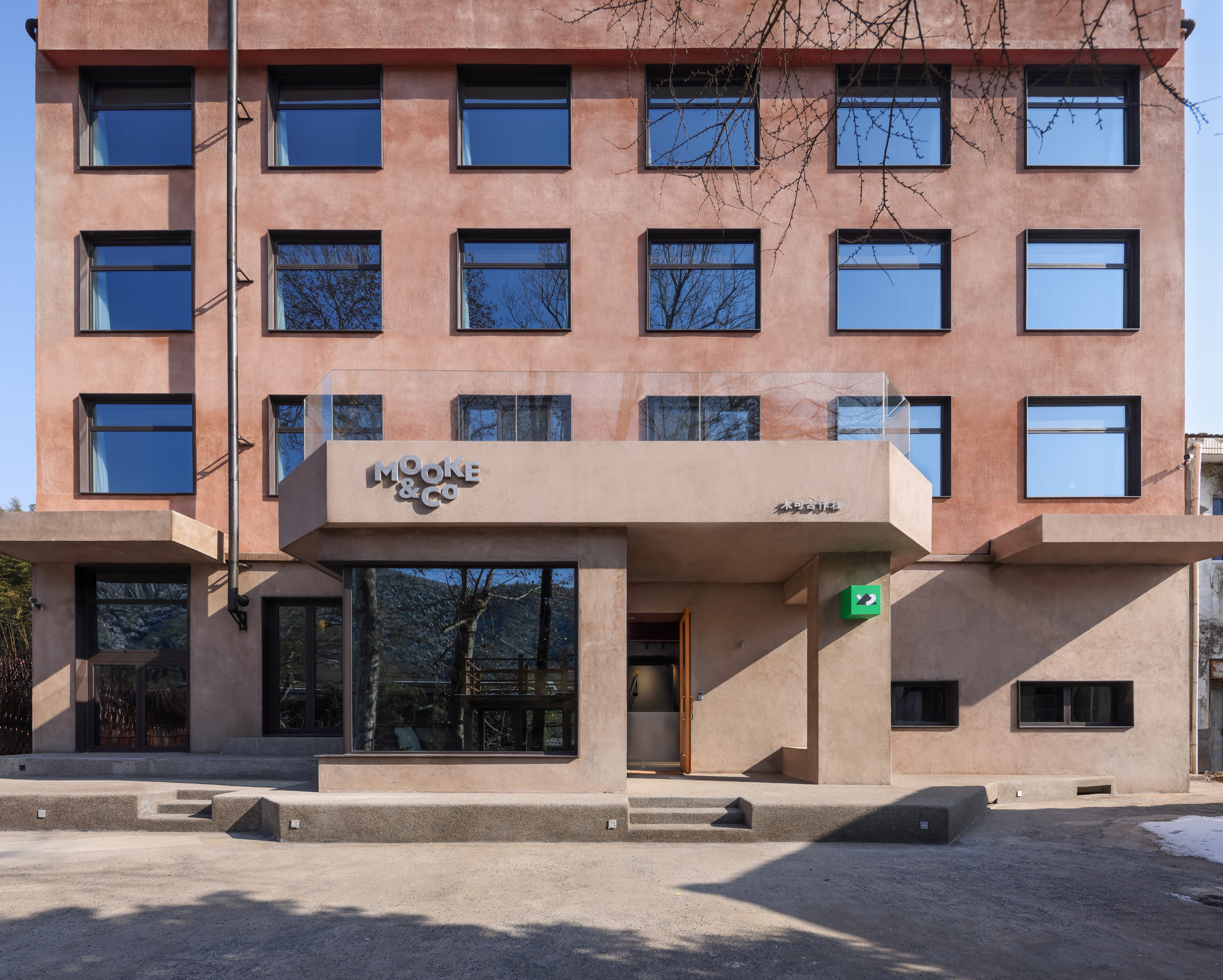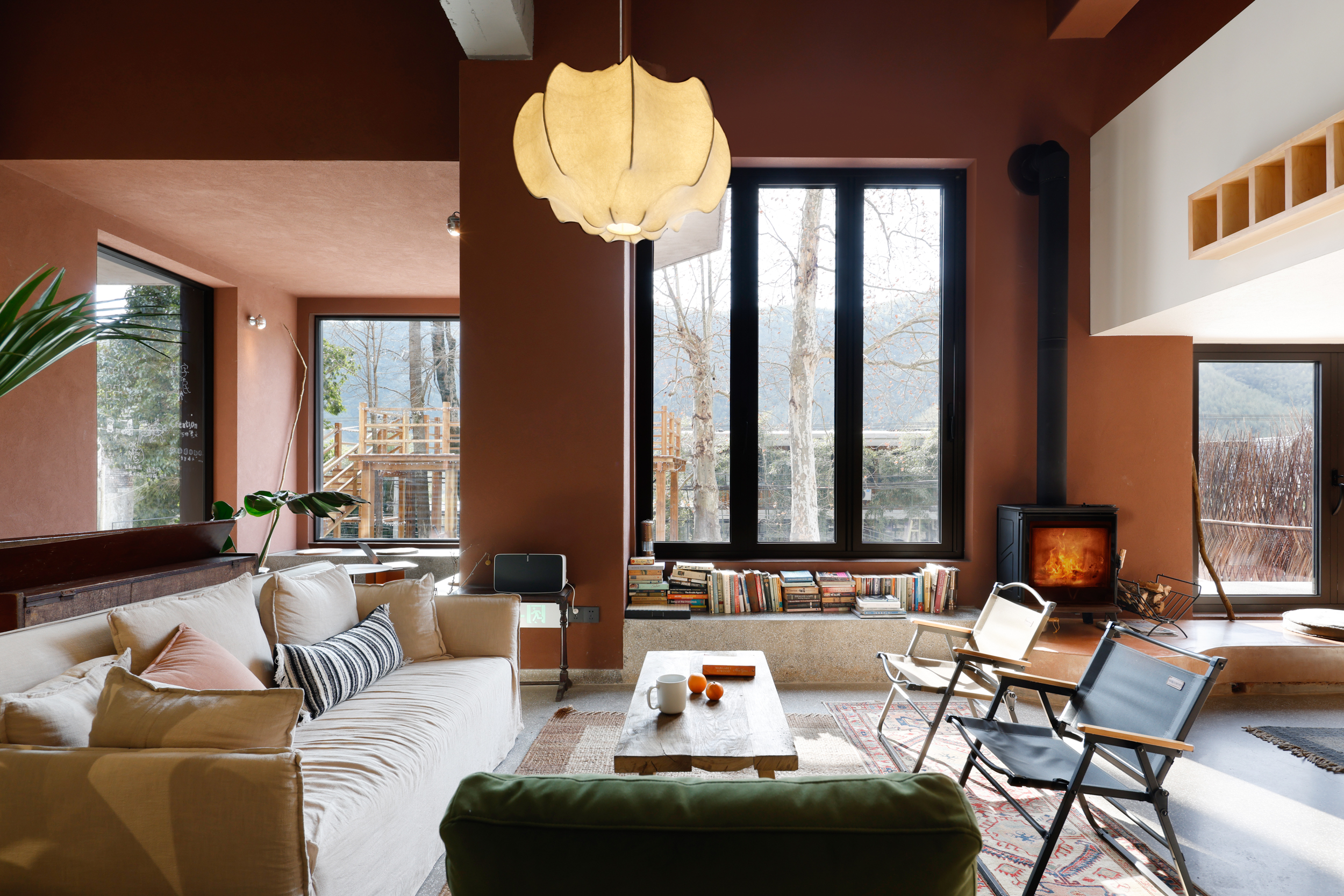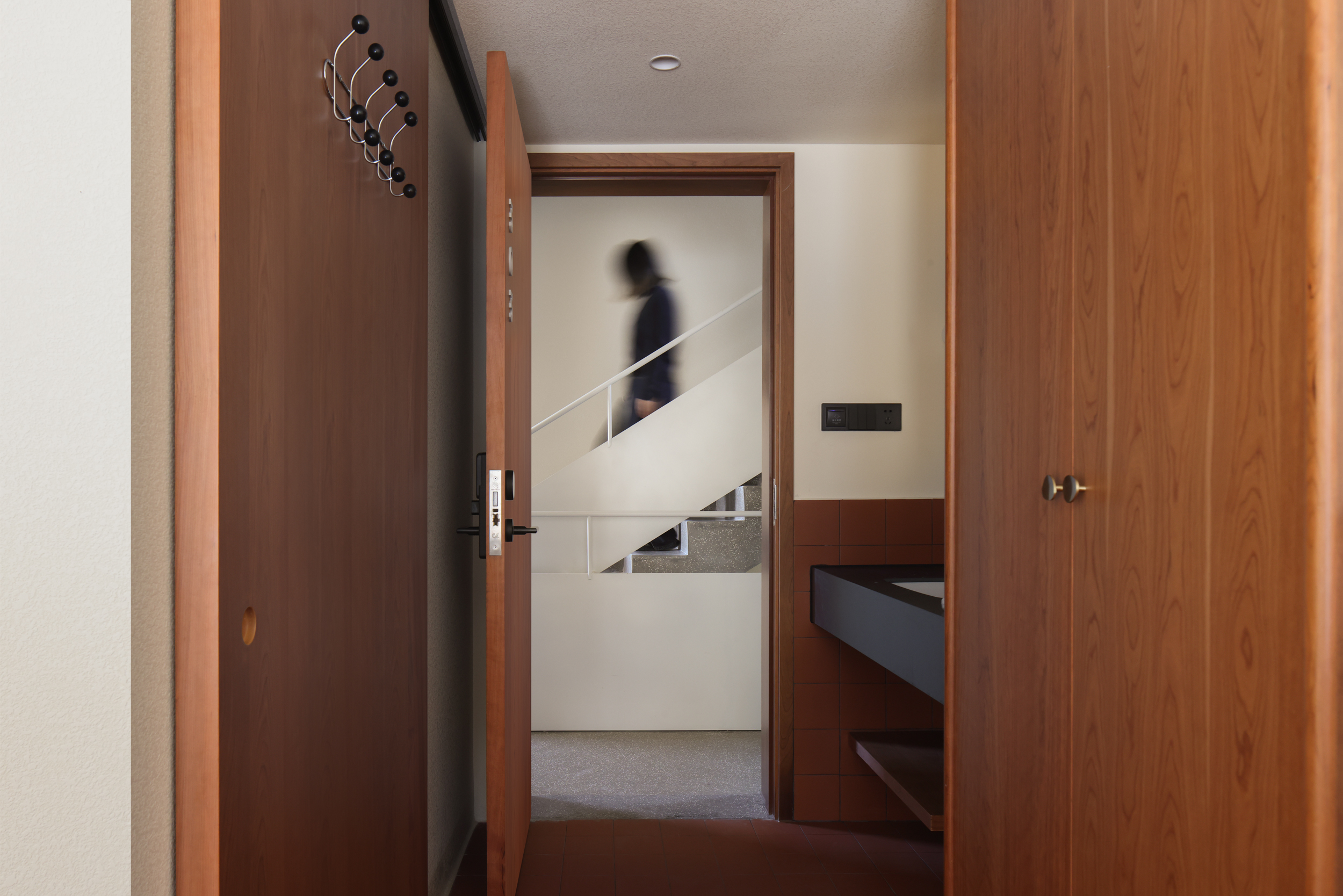

设计单位 LEL DESIGN STUDIO
项目地点 浙江省德清县莫干山
建成时间 2023年10月
建筑面积 900平方米
本文文字由设计单位提供。
木可合作社位于浙江德清县莫干山镇计庙坞村,是一栋曾经作为乡村信用社使用的四层办公楼。第一次的基地踏勘是在2020年1月,群山环绕中,细雨迷蒙的村落很安静,不同年代的建筑使村庄环境显得有些驳杂无序。
MOOKE&CO is located in Jimiaowu Village, Moganshan Town, DeQing County, ZheJiang Province, the site is a four-story office building that was once used as a rural credit cooperative. Our first site survey was in January 2020, the village which surrounded by mountains was so quiet in the drizzling.The architecture of different eras makes the village environment seem a bit chaotic.
项目开启时,项目团队未曾料想这会是场四年之约。期间有太多沮丧的时刻,团队仿佛在无尽的隧道中前行,一直走一直走一直走,终于前方有光,我们获得了这栋砖粉色小楼。
When the project started, we never imagined it would be a four-year journey. There were many frustrating moments, as if navigating through an endless tunnel. After persevering, light finally appeared ahead. Ultimately, we obtained this brick-pink building.



除了主体功能可以作为青年旅社使用,业主也希望这里可以成为小型数字游民社区;成为除度假之外,人们进入乡村的另一种生活模式的载体。虽称之为青旅,但对象不仅限于青年,或者说青年的范畴只界定生活和心理状态。
Beyond its primary function as a youth hostel, the owner also hopes it can become a small digital nomad community, providing an alternative rural lifestyle beyond just vacationing. Although labeled as a youth hostel, it’s not limited to young people; rather, the term "youth" refers to a lifestyle and mental state.
业主与我们都共同希望这里可以成为寂静村落里的文化起搏器,而不仅仅是商业内容的植入。事实证明,在运营近一年的时间里,这里举办了各类沙龙、品牌活动、运动疗愈、朋友聚会等活动,木可合作社也成为了数字游民和艺术家驻留的活跃地点。
Beyond its primary function as a youth hostel, the owner also hopes it can become a small digital nomad community, providing an alternative rural lifestyle beyond just vacationing. Although labeled as a youth hostel, it’s not limited to young people; rather, the term "youth" refers to a lifestyle and mental state.


对于乡村改建项目,设计需要谨慎又克制地把握介入的分寸感。抹去多少旧时光的痕迹,留下多少设计师的思考,可以提供给使用者怎样的未来,永远是设计师们需要在不断比较和取舍中获得平衡的课题。
For rural redevelopment projects, it’s crucial to balance intervention with restraint. How much of the old should be erased and how much of the designer's vision should be preserved to offer users a promising future is a challenge that requires continuous comparison and compromise.


材料与在地性
Materials and Locality
每个地区特有的土质在不同的配料和不同的环境影响下都会呈现不同的色调,而莫干山地区的土质就是一种柔和的淡粉色,因而当地建筑很常见有温暖粉色的土墙。外墙设计采用的砖红色即源起于此。
The soil in each region presents different hues depending on its composition and environmental influences. The soil in the Moganshan area is a soft, light pink. Historically, Local buildings often featured warm pink earthen walls. The brick-red color used in the exterior design is derived from this tradition.

在地材料的运用有着更贴近当地生活的亲切感,随着时光流转,色调仍在不断变化,是一种属于时间的智慧和美感。为了重现这种在地特色的建筑色调,我们经过很多次试验和调配,以一种环保而廉价的方式获得了这种砖红色。场地上回收的废旧红砖被破碎成粉,即是质朴无华又不会掉色的天然色料。随后我们以不同比例混合其他浆料骨料,制成项目的外墙涂料和水磨石材料。
Using local materials provides a more intimate connection to the area’s lifestyle. Over time, the color naturally evolves, embodying a form of wisdom and aesthetic that belongs to the passage of time.To recreate this local architectural hue, we conducted numerous tests and adjustments to achieve the brick-red color in an eco-friendly and cost-effective manner. We used crushed old red bricks recovered from the site as a natural, non-fading pigment. By mixing this with other binder materials in varying
proportions, we created the exterior wall paint and terrazzo material for the project.



首层室内与场景
Ground Floor and Scene
一层大厅公区的室内,以同样热烈的砖橘色调的涂料,与室外相呼应。水磨石地台中混入有回收的废旧红砖颗粒,最终呈现的砖粉色调也非常令人满意。
The lobby on the ground floor features a lively brick-orange paint, complementing the exterior hues. Recycled red brick particles are incorporated into the terrazzo flooring, resulting in a pleasing brick-pink shade.
美中不足的是原本要预埋的地暖管最终没有实现。因为常规水磨石面层的厚度在1厘米左右,埋设地暖管后应加厚面层来防止起鼓开裂,但因为地台上部的高度有限,已不具备增高修改的可能性。同时,由于工期造价等制约,地台也不能再重新制作。这也让我们有些许遗憾。
The lobby on the ground floor features a lively brick-orange paint, complementing the exterior hues. Recycled red brick particles are incorporated into the terrazzo flooring, resulting in a pleasing brick-pink shade.










客房与氛围
Guest Rooms and Atmosphere
原始砖混结构的布局不易进行过多布局调整,因此2-4层客房延续了原有的房间分隔方式。
The structure of the original building is brick-concrete, so the room layout adjustments were limited,the guest rooms on floors 2-4 retained the original partitioning.
客房的设计相对平实简洁,整体色调采用暖色系。小块陶土地砖回应了公区色调,实木板和偏中古风格的灯具则希望延续莫干山地区特有的海派风格。建筑虽定位为青旅,但希望是一种沉稳耐久,不以年龄定义风格的质感。
The design is simple and inviting, featuring small ceramic tiles that complement the colors of the public areas. Wooden panels and vintage-style lamps highlight the unique Shanghai aesthetic. While marketed as a youth hostel, the goal is to achieve a timeless, durable quality that transcends age.




露台与山
Terrace and Mountain View
露台区域是更适合观赏村庄景致与举办户外活动的场地。围墙遮蔽了下方相对有些驳杂的村庄建筑,显得周围山景更纯净舒展。
The terrace is designed to offer a panoramic view of the village and accommodate outdoor activities. The enclosing walls obscure the more cluttered village buildings below, presenting a clearer, more expansive mountain view.






我们希望这不只是一栋建筑的改造,一座青旅的落成,而是代表一种面向未来乡村生活方式的更新。希望这座新的山中青年聚落,能够让更多故事有机会在这里、在乡村发生。
The objective extends beyond mere building renovation or the establishment of a youth hostel; it is to embody a forward-looking rural lifestyle. We hope this new mountain settlement will spark numerous stories and opportunities in the countryside.


设计图纸 ▽








完整项目信息
项目名称:莫干山计庙坞木可合作社(数字游民社区青旅)
项目类型:建筑/室内/改造
项目地点:浙江省德清县莫干山镇计庙坞村
设计单位:LEL DESIGN STUDIO
事务所网站:http://www.lelstudio.com
联系邮箱:lulu.lel@foxmail.com
设计顾问:吕晓辉
主创建筑师:刘璐
建筑设计:刘璐、吕琪、余快、罗赛
室内设计:刘璐、王婧、王一玎、张凡
导视设计:changstudios兰婧琦
业主:浙江德清前溪源旅游开发有限公司
造价:500万
建成状态:建成
设计时间:2020年9月—2022年10月
建设时间:2022年10月—2023年10月
用地面积:400平方米
建筑面积:900平方米
项目总协调:刘璐
撰文:刘璐
材料:水磨石、自创环保废旧砖粉涂料、实木
摄影师:YUUUUN.STUDIO
版权声明:本文由LEL DESIGN studio授权发布。欢迎转发,禁止以有方编辑版本转载。
投稿邮箱:media@archiposition.com
上一篇:虹桥交通枢纽商业连通道HUBO / Sò Studio
下一篇:100个令人难忘的建筑场景 2.0